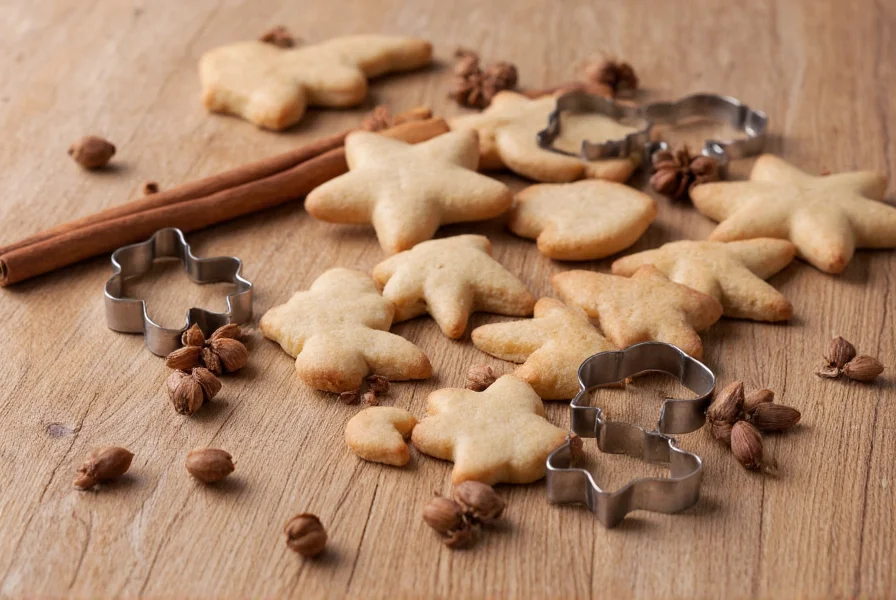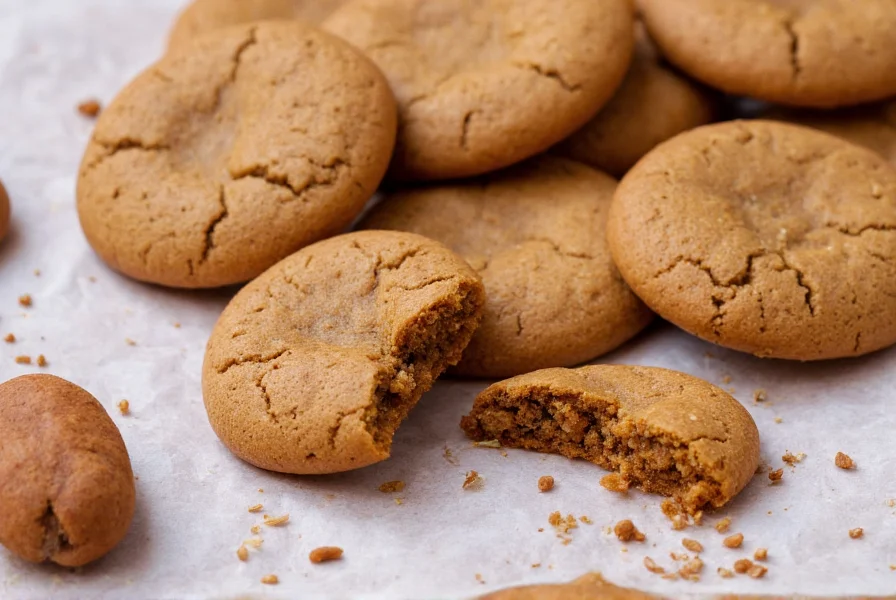For centuries, authentic Swedish ginger cookies have been a staple of Scandinavian baking traditions, particularly during the holiday season. Unlike their thicker American counterparts, traditional pepparkakor are rolled paper-thin and cut into intricate shapes, creating delicate cookies that deliver an intense burst of warm spices with every bite.
The Historical Roots of Pepparkakor
The history of Swedish ginger cookies traces back to medieval times when spices became more accessible through European trade routes. Originally called "pepparkakor" (literally "pepper cakes"), these cookies earned their name from the generous use of black pepper alongside other exotic spices that were considered luxury items at the time. By the 19th century, ginger had become the dominant spice, though the traditional name remained.
In Sweden, pepparkakor preparation is often a family affair, with generations gathering to roll, cut, and decorate these delicate cookies. The tradition typically begins in late November, building anticipation for the Christmas season. Many Swedish families guard their traditional pepparkakor ingredients closely, with recipes passed down through generations.
What Makes Swedish Ginger Cookies Unique
The distinctive character of Swedish ginger cookies vs American ginger snaps lies in several key elements:
| Feature | Swedish Pepparkakor | American Ginger Snaps |
|---|---|---|
| Texture | Thin, crisp, and delicate | Thicker, chewier center with crisp edges |
| Spice Profile | Complex blend of ginger, cinnamon, cloves, cardamom, and black pepper | Primarily ginger-forward with less complex spice blend |
| Sweetness Level | Moderate sweetness allowing spices to shine | Generally sweeter with more pronounced sugar content |
| Traditional Shape | Intricate cutouts (hearts, stars, animals) | Simple round drops |
Authentic Swedish Ginger Cookies Recipe
Creating authentic Swedish ginger cookies recipe requires precision with both ingredients and technique. The traditional recipe uses a cooked syrup method that develops deeper flavors compared to simply creaming butter and sugar.
Ingredients for Traditional Pepparkakor
Makes approximately 50 cookies
- 1 cup (200g) dark brown sugar
- 1/2 cup (120ml) light corn syrup or golden syrup
- 1/2 cup (120ml) heavy cream or full-fat milk
- 1/2 cup (115g) unsalted butter
- 3 1/2 cups (440g) all-purpose flour
- 2 tablespoons ginger
- 1 1/2 teaspoons cinnamon
- 1 teaspoon cloves
- 1/2 teaspoon cardamom
- 1/4 teaspoon black pepper
- 1/2 teaspoon baking soda
- 1/4 teaspoon salt
Step-by-Step Baking Instructions
- In a medium saucepan, combine brown sugar, corn syrup, cream, and butter. Heat over medium until butter melts and mixture is warm (do not boil).
- Remove from heat and stir in all spices, baking soda, and salt.
- Gradually add flour, mixing until a soft dough forms. The dough will be sticky at first but will firm up as it cools.
- Cover and refrigerate for at least 4 hours, preferably overnight. This resting period allows flavors to develop and makes the dough easier to roll.
- Preheat oven to 350°F (175°C). Line baking sheets with parchment paper.
- Working with small portions of dough at a time (keeping the rest chilled), roll between two sheets of parchment paper to 1/16 inch thickness.
- Cut into desired shapes using cookie cutters. For traditional Swedish Christmas cookie traditions, hearts, stars, and animal shapes are most common.
- Place cookies on prepared baking sheets, spacing them about 1 inch apart.
- Bake for 7-9 minutes until edges are firm and cookies are set. They should remain light in color.
- Cool on baking sheet for 2 minutes before transferring to wire racks to cool completely.
Perfecting Your Swedish Ginger Cookies Technique
Achieving the perfect texture for soft Swedish ginger cookies technique requires attention to several key factors:
- Dough temperature: Always keep dough chilled until ready to roll. Warm dough becomes difficult to handle and loses its delicate texture.
- Rolling thickness: Use guide sticks (dowels of specific thickness) to ensure consistent 1/16 inch thickness for authentic crispness.
- Baking time: These cookies bake quickly. Watch closely during the final minute to prevent over-browning.
- Cooling method: Allow cookies to cool briefly on the baking sheet before transferring to prevent breakage.
Regional Variations Across Sweden
While the basic traditional Swedish holiday cookies recipe remains consistent, regional variations exist throughout Sweden:
- Northern Sweden: Often includes a touch more black pepper for extra warmth against the cold climate
- Småland region: Known for particularly thin, crisp cookies often shaped like hearts and hung on Christmas trees
- Gothenburg area: Sometimes incorporates a small amount of orange zest for citrus notes
- Stockholm tradition: Cookies are often decorated with pearl sugar for special occasions
Serving Traditions and Pairings
In Sweden, pepparkakor are traditionally served with coffee or glögg (mulled wine) during the holiday season. The Swedish concept of "fika"—a coffee break with baked goods—often features these spicy cookies. Many families create elaborate gingerbread houses or villages using pepparkakor as the building material, a tradition that has spread internationally.
For an authentic experience, serve your easy Swedish ginger cookie recipe creations with:
- Strong black coffee
- Glögg (Swedish mulled wine)
- Vanilla ice cream for a "pepparkakor à la mode"
- Milk for children's snacks
Storage and Shelf Life
One of the remarkable qualities of Swedish ginger cookies storage tips is their longevity. Properly stored, these cookies actually improve in flavor over time as the spices continue to meld.
- Short-term storage: Keep in an airtight container at room temperature for up to 2 weeks
- Long-term storage: Freeze in vacuum-sealed bags for up to 6 months
- Flavor development: For best flavor, allow cookies to mature in an airtight container for 3-5 days before serving
Troubleshooting Common Issues
Even experienced bakers encounter challenges with traditional pepparkakor ingredients. Here are solutions to common problems:
- Dough too sticky: Refrigerate longer (up to 24 hours) or add small amounts of flour (1 tablespoon at a time)
- Cookies spreading too much: Ensure butter and cream mixture has cooled before adding flour
- Cookies too hard: Reduce baking time by 1-2 minutes; they continue to crisp as they cool
- Spice flavor too mild: Let dough rest longer (up to 48 hours) to allow flavors to develop

The Enduring Appeal of Swedish Ginger Cookies
What makes Swedish ginger cookies endure as a beloved tradition across centuries? Their magic lies in the perfect balance of spice and sweetness, the ritual of preparation, and their ability to transport us to a simpler time. Unlike many modern cookie recipes that prioritize convenience, pepparkakor demand patience and attention—qualities that make the final product all the more rewarding.
As Scandinavian baking traditions continue to gain global popularity, these delicate spice cookies offer a delicious connection to Swedish heritage. Whether you're following a family recipe passed down through generations or trying your hand at how to make Swedish ginger snaps for the first time, each batch carries with it centuries of tradition and the warm spirit of Swedish hospitality.
Frequently Asked Questions
What makes Swedish ginger cookies different from regular ginger snaps?
Swedish ginger cookies (pepparkakor) are significantly thinner and more delicate than American ginger snaps. They feature a more complex spice blend including cardamom and black pepper alongside ginger, cinnamon, and cloves. Traditional pepparkakor are rolled paper-thin and cut into intricate shapes, while ginger snaps are typically thicker drop cookies with a chewy center.
Why do Swedish ginger cookies improve in flavor after several days?
The complex spice blend in pepparkakor continues to meld and develop as the cookies rest. The moisture in the cookies allows the spices to fully hydrate and release their flavors. This maturation process, which takes 3-5 days in an airtight container, creates a more balanced and nuanced flavor profile than when freshly baked.
Can I make Swedish ginger cookies without corn syrup?
Yes, you can substitute honey or golden syrup for corn syrup in Swedish ginger cookies. Traditional Swedish recipes often use syrup made from sugar beet, which has a similar consistency to golden syrup. The syrup helps create the distinctive crisp texture and prevents crystallization. Avoid using maple syrup as its strong flavor will overpower the delicate spice balance.
How thin should Swedish ginger cookies be rolled?
Authentic pepparkakor should be rolled to approximately 1/16 inch (1.5mm) thickness. This thinness creates the characteristic crisp texture that melts in your mouth. Many Swedish bakers use rolling guide sticks of specific thickness to ensure consistency. If the cookies are too thick, they won't achieve the proper delicate crispness; if too thin, they may burn during baking.
Why are Swedish ginger cookies called pepparkakor when they don't contain much pepper?
The name "pepparkakor" (literally "pepper cakes") dates back to medieval times when black pepper was the dominant spice in these cookies, as it was one of the few spices widely available. As trade routes expanded, bakers incorporated other spices like ginger, cinnamon, and cloves, but the traditional name remained. Modern recipes typically include just a pinch of black pepper to maintain historical authenticity while allowing other spices to shine.











 浙公网安备
33010002000092号
浙公网安备
33010002000092号 浙B2-20120091-4
浙B2-20120091-4